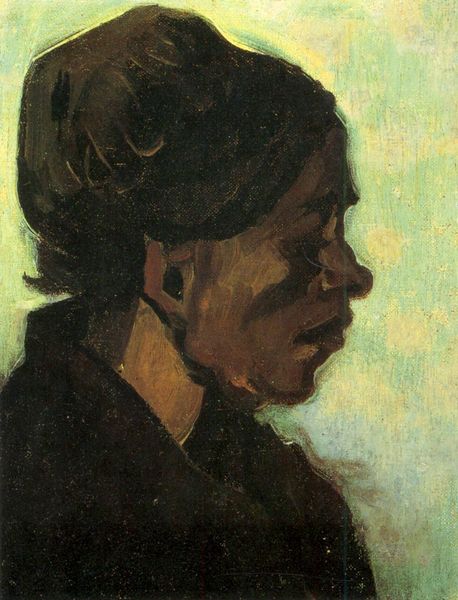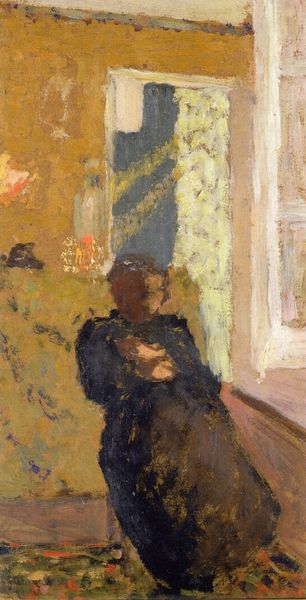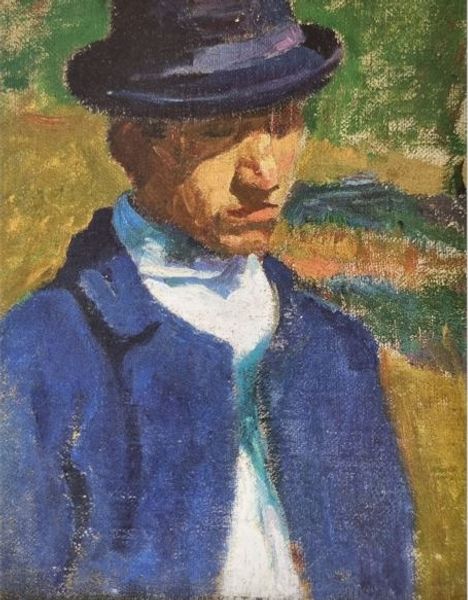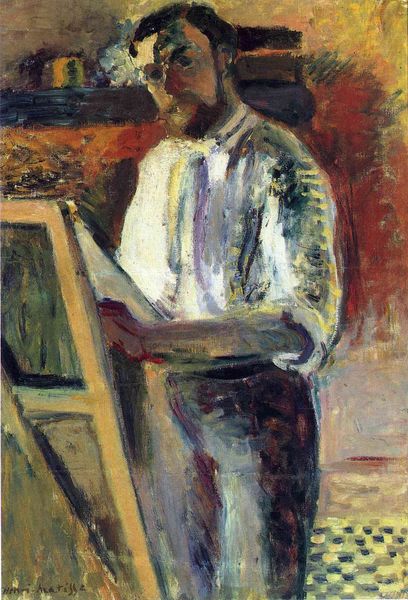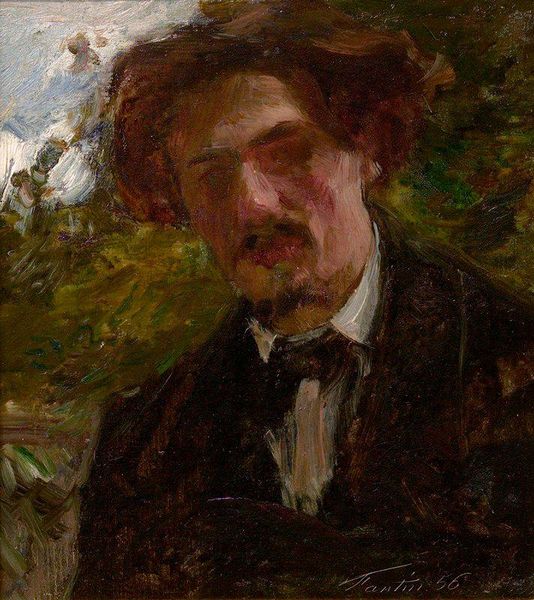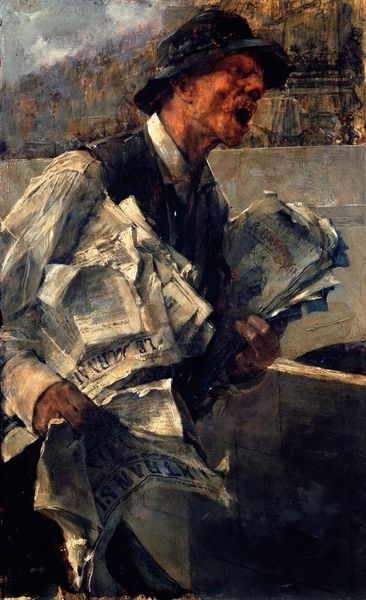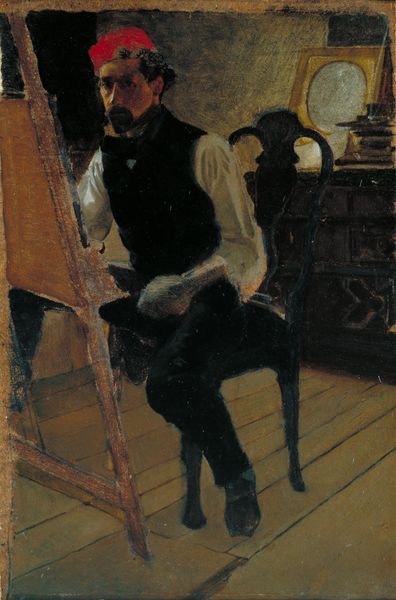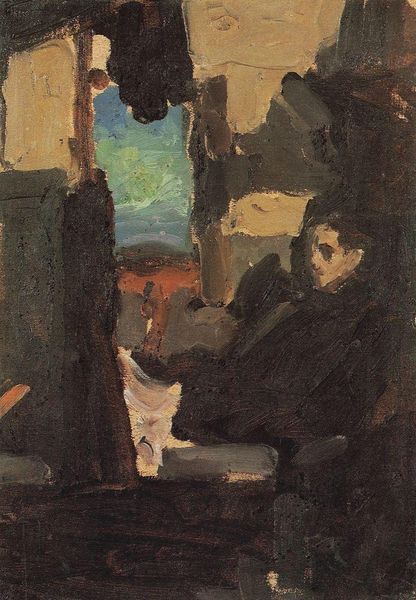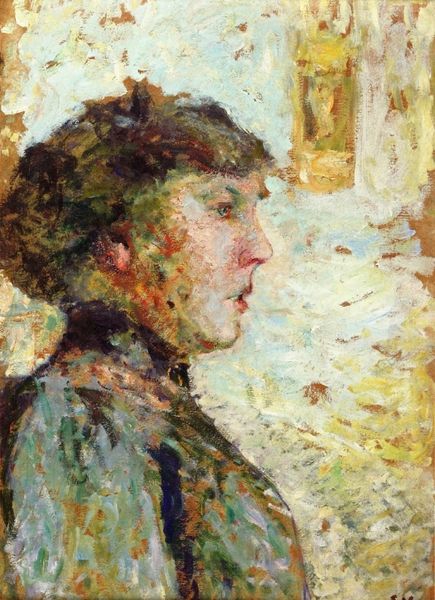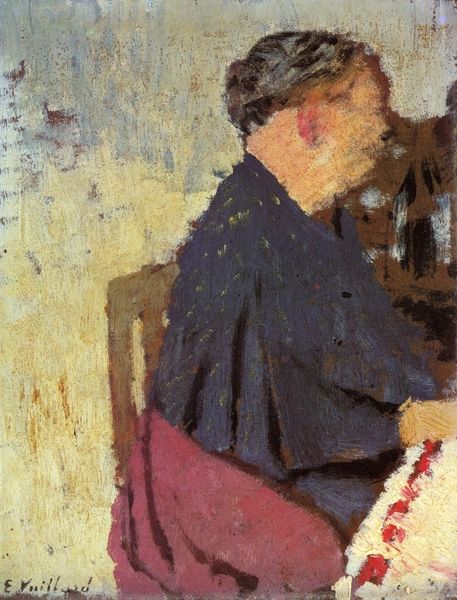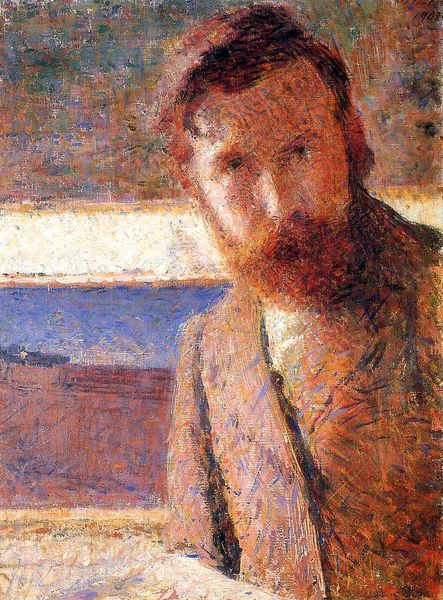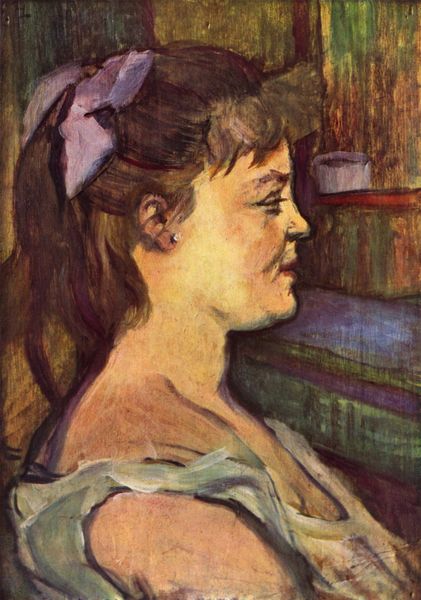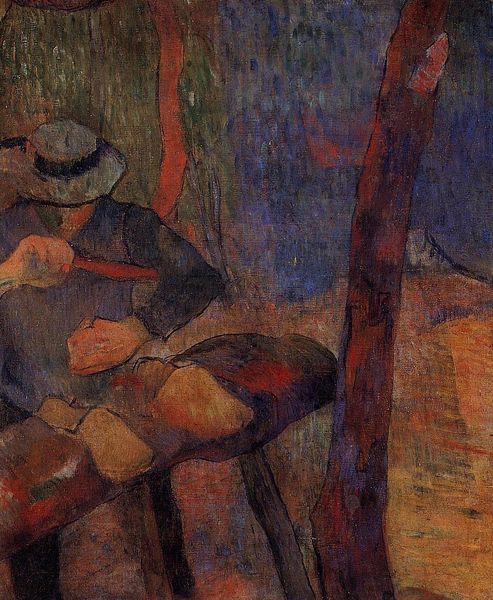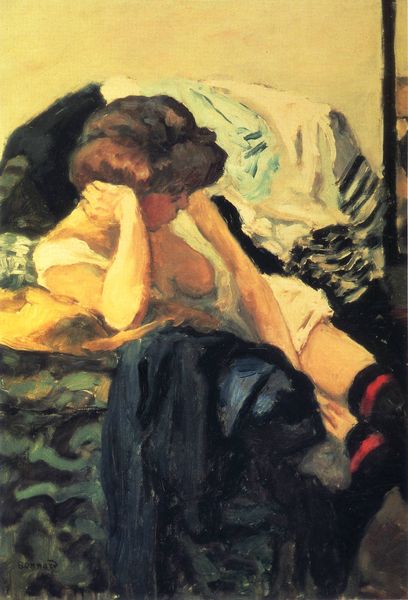
painting, oil-paint
#
portrait
#
self-portrait
#
painting
#
impressionism
#
oil-paint
#
oil painting
#
famous-people
#
male-portraits
#
portrait art
Copyright: Public domain
Curator: Here we have Frédéric Bazille’s “Self-Portrait at Saint-Saveur,” painted in 1868. Editor: It has a distinctly unfinished feel, almost like a sketch. Very immediate, quite different from the formal portraits we often see. The earthy tones and broad brushstrokes contribute to a very introspective mood. Curator: Yes, there's an incredible intimacy to it. Knowing Bazille’s context – his privileged background allowed him to support fellow artists like Monet and Renoir, whose art supplies came directly from materials his family provided. Does knowing that background affect how you view his representation of himself in terms of labor and the consumption of those materials? Editor: Absolutely, it provides a fascinating layer. Consider the act of self-portraiture in 1868. It was about more than capturing likeness. It was an active declaration of identity within specific artistic and social circles. Bazille is positioning himself within Impressionism, actively shaping his legacy and relationship with this emergent movement through how he used his artistic materials, but perhaps doing so using wealth made on the backs of the working class? Curator: Precisely. The seemingly casual nature of the painting also belies the cost and labor embedded in creating even a “quick” study like this. These paints came at a price. This leads to a re-evaluation of "high" and "low" art where art is more than aesthetics: art as material, social practice and consumer good, as a window into the power dynamics of production and display. Editor: And don't forget that the location of the painting matters immensely. The “Self-Portrait” resides in the Musée Fabre in Montpellier, not a major Parisian institution, it begs the questions of why this is a museum, why this city. Its current institutional context highlights Bazille’s regional roots, and solidifies a reputation beyond that of the more successful impressionists. Curator: It does challenge conventional notions of artistic fame. What feels so personal, almost private, also engages the history of the museum as gatekeeper. Editor: Ultimately, Bazille’s self-representation is anything but straightforward. It's tied to the material means of its creation, to social positioning, and how it reflects a painter staking claim to the avant-garde, as well as his class positioning. Curator: So much for what appears to be an off-the-cuff piece. Thank you, for contextualizing and illustrating the intersections of process and purpose!
Comments
No comments
Be the first to comment and join the conversation on the ultimate creative platform.
